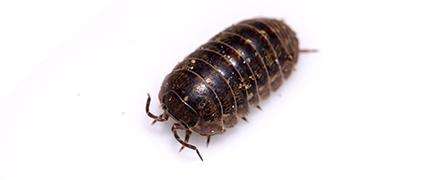Invertebrate Pets
Invertebrates are animals without a backbone. They include snails, slugs, insects, isopods, scorpions, spiders, and many other land- and sea-dwelling animals. Invertebrates may seem interesting to keep as pets in a terrarium, but many are illegal to own because they could harm U.S. agriculture and the natural environment if they escape.
That’s why you should contact USDA’s Plant Protection and Quarantine (PPQ) program before buying a land-dwelling invertebrate. You might need a permit to buy it, or the invertebrate might be illegal because it could pose a danger to U.S. agriculture or the environment. Although many vendors in the United States have Federal and State permits and sell approved invertebrates, don’t take chances—reach out to us first and find out if it’s legal to own:
Call: (301) 851-2285, or toll-free (866) 524-5421
Email: Pest.Permits@usda.gov
We also suggest you learn about the PPQ 526 Permit, which covers the importation and interstate movement of invertebrate animals.
USDA regulates the importation and interstate movement of ALL ant species because certain species can be serious plant pests. If certain non-native ant species become established in new areas, they could outcompete native ants, harm native plants, reduce biodiversity, damage crops, and cost millions of dollars to government and industry to eradicate or control.
As a responsible ant keeper, importer, or seller, you must do everything you can to prevent the introduction and release of new invasive species. If you are moving ants between States, importing them, or selling them interstate, you must have a valid PPQ 526 permit for the specific ant species and the State you are moving them to. You can learn how to apply for a PPQ 526 permit on our eFile web page. Select “PPQ-526” from the dropdown, and then click “Get Started.”
Purchasing ants is legal if the supplier has a valid permit that includes the particular species you request and allows for shipment to your State. To verify this information on the supplier’s permit, email USDA Senior Entomologist Carlos Blanco at Carlos.A.Blanco@usda.gov.
Please verify the identity (taxonomy/species) of the ants you purchase by posting pictures in the many available ant ID groups. There are numerous online communities, books, and resources to help you perform an ID. Be sure to ID the species of each purchase/shipment. Never trust an online vendor who claims their permit is valid without verifying it with the proper authorities.
When you import ants from an online vendor, you are the importer of record, and you are responsible for obtaining any required permits. You should never assume that online vendors operating overseas are aware of USDA import regulations and requirements.
Violating any laws associated with the movement or release of ants may result in substantial civil or criminal penalties. USDA may cancel all current permits you have and deny future permit applications. USDA's authority to regulate ants and plant pests is described in CFR Part 7 § 330.200. Penalties for violations can be found in Title 7 of the U.S. Code (7 USC 7734).
Capturing local ants is the best practice for becoming an ant keeper. Although this may require more effort, you will not need a USDA permit and will learn much about their biology. To time your search for ant flights, visit AntFlights.com, a worldwide registration system for ant nuptial flights. Additionally, numerous community websites can help you locate ant flights in your area. This is always a better alternative than trusting an anonymous online vendor, and you might even catch an unexpected queen! If you are not sure what ants are native to your area, you may find www.antmaps.org to be a good resource.
NEVER release ants into the environment, whether they were locally captured, purchased, or imported. If you need to euthanize your ant colony, the best and simplest method is to place them in your freezer for 24 hours. While this may seem harsh, there have been many instances of ants becoming established in an environment and causing harm to numerous other animals and the ecosystem.
A Cautionary Tale: The Red Imported Fire Ant
One invasive ant species—the red imported fire ant (RIFA)—feeds on recently emerged crops. They can also girdle young trees. Large nests located in fields interfere with and damage equipment during cultivation and harvesting. A single fire ant can sting its target repeatedly. RIFAs respond rapidly and aggressively to disturbances, and ant attacks inhibit field-worker activities. These pests can damage the environment by displacing native ant species and reducing food sources for wildlife. Their presence can prevent cattle from grazing, and they can eat and kill recently born mammals, reptiles, and birds. RIFAs cause $6.7 billion in annual losses in the United States.
[Reference for the $6.7 billion: https://ant-pests.extension.org/other-impacts-of-fire-ants/]
Isopods are an order of invertebrates that belongs to the greater crustacean group of animals, which includes crabs and shrimp. Isopods can live on land or in the water, and land-dwelling ones can damage crops and ornamental plants. You need a PPQ 526 Permit to legally own many species of isopods, so contact PPQ before buying these invertebrates.
For more information, email Senior Entomologist Carlos Blanco atCarlos.A.Blanco@usda.gov.


